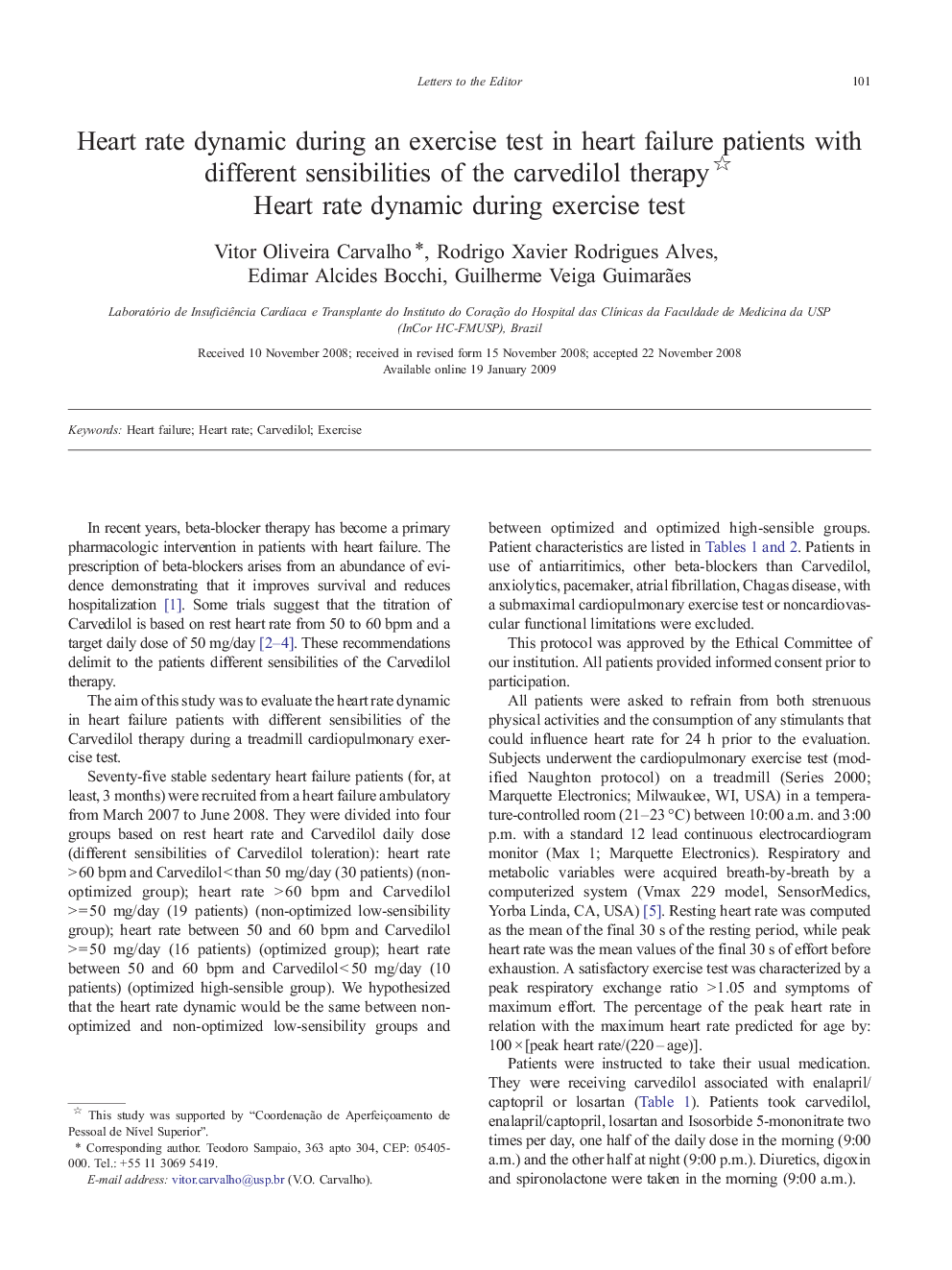| Article ID | Journal | Published Year | Pages | File Type |
|---|---|---|---|---|
| 2931973 | International Journal of Cardiology | 2010 | 4 Pages |
BackgroundSome trials suggest that the titration of Carvedilol is based on rest heart rate from 50 to 60 bpm and a target daily dose of 50 mg/day.AimTo evaluate the heart rate dynamic in heart failure patients with different sensibilities of the Carvedilol therapy during an exercise test.MethodsPatients were divided into four groups and submitted a treadmill cardiopulmonary exercise test: heart rate > 60 bpm and Carvedilol < than 50 mg/day (30 patients) (non-optimized group); heart rate > 60 bpm and Carvedilol > = 50 mg/day (19 patients) (non-optimized low-sensibility); heart rate between 50 and 60 bpm and Carvedilol > = 50 mg/day (16 patients) (optimized); heart rate between 50 and 60 bpm and Carvedilol < 50 mg/day (10 patients) (optimized high-sensible group).ResultsThe heart rate peak and the percentage of the peak heart rate in relation with the maximum heart rate predicted for age during the cardiopulmonary exercise test were the same between the non-optimized (128 ± 13, bpm; 74 ± 7%) and non-optimized low-sensibility (136 ± 20, bpm; 78 ± 8%) groups, and between the optimized (105 ± 25, bpm; 60 ± 13%) and optimized high-sensible (108 ± 16, bpm; 62 ± 8%) groups. The heart rate reserve was the same.ConclusionThe heart rate dynamic was almost the same between groups with rest heart rate > 60 bpm and between groups < 60 bpm, independently of the Carvedilol dose. Based on these findings, we propose a new method to titrate carvedilol therapy by the cardiopulmonary exercise test.
